The post {Giveaway} – Franschhoek Cap Classique & Champagne Festival appeared first on Incogvino.
]]>
A sublime day out
Every year, December is welcomed in the most superb fashion – with the Franschhoek Cap Classique and Champagne Festival.This year, I have TWO sets of FOUR tickets to give away. Tickets for Saturday 3 December have already been SOLD OUT, so if you want to indulge in heavenly fizz this weekend, you want to get in on this action.
I am giving away:
One set of 4 tickets for Saturday 3 December, and
One set of 4 tickets for Sunday 4 December.
To enter:
– Like Incogvino’s Facebook Page
– Comment below and tell us:
a) which day’s (Saturday or Sunday) tickets you would like to win and
b) what would make your #FranschhoekMCC experience #priceless
BONUS ENTRIES:
– Retweet this post and tag us on Twitter
– Share this post and tag us on Facebook
Tickets are valued at R350 each and includes:
– Entry to the festival
– A complimentary tasting glass
– A Mastercard contactless card preloaded with tasting coupons
Check out http://www.franschhoekmcc.co.za for more information on the festival.
Winners will be randomly drawn and announced on THURSDAY 1 DECEMBER.
The post {Giveaway} – Franschhoek Cap Classique & Champagne Festival appeared first on Incogvino.
]]>The post Wines For The Worst Social Media Stereotypes appeared first on Incogvino.
]]>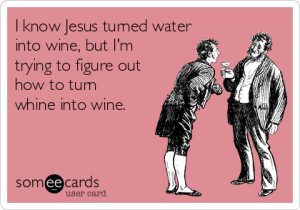
Whine into wine?
Or the more descriptive yet less catchy title: “The Best Wines To Pair With The Most Annoying Social Media Stereotypes“.
If you are even moderately active on any social media channel or platform, by definition, you will be engaging in a quasi-social manner with other humans. And we know that – as humans go – the spectrum ranges from amazing to annoying and everything inbetween. And as the world has gone mad for pairing wine with everything from moods to music, I present to you a useful guide to pairing everyone’s least favourite online stereotype with a wine to make it a bit more bearable.
The beauty of social media is the eclectic mix of individuals that make it up. That same attribute is also the root of the more annoying side. I often scroll through my Twitter or Facebook feed seeing the same predictable drivel from the same predictable people. Yes, of course you can unfollow or unfriend these tedious turds but even if you clear the offending individuals from your timeline, carbon copy replacements will pop up in time. So rather than spending inordinate amounts of time scrubbing my timeline, I have some wine to deal with the whining. I think some wines are particularly effective when dealing with specific types of bothersome bodies, so here is my definitive lists of wines to pair with all those eye-rolls:
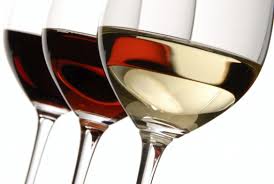
Wine makes everything better
- The Hashtag Harlots
Platform: Twitter / Instagram
Who are they? Characterized by promiscuous use of hashtags – hashtags everywhere – these are usually people who post to Instagram but also share directly to Twitter. Like mini SEO meltdowns, they’ll use hashtags for anything remotely related to what they’re posting as well as a few that have no bearing on the subject matter. E.g. “Yay, wine! #winewednesday #wine #merlot #riedel #alcie #OMG #vino #winecountry #WTF #BFF #crunked”
Wine: To cut through the dense thickness of the content matter, you will need a fresh, slightly acidic Sauvignon Blanc. Something to provide you with crisp relief when you’re suffocated by a flood of inane hashtags. - The Mommy Not-So-Bloggers
Platform: Facebook / Twitter
Who are they? Referring less to bloggers who actually produce helpful, often witty, content about the perils and pearls of motherhood and more to the meaningless moanings of the pregnant and the parental. By all means, share your precious moments on social media. That’s what it’s there for. We’re (mostly) all friends here. Just be mindful that if you’ve stripped your own identity of everything besides having produced offspring (i.e. when it’s all you ever talk about or everything you say is tied into it somehow), you can’t really get prickly when people accept that and only engage in terms of your maternal status.
Wine: Traditionally associated with maternal preferences, you’ll definitely want to avoid Chardonnay and rather go for something more exotic, but still spectacular and richly rewarding. My choice here would be a marvelous Roussanne or Semillon. While they’ll spend the foreseeable future exhausted and covered in child-manufactured fluids, you’ll still be footloose and infant free. - The TMI-ers
Platform: Facebook / Twitter
Who are they? Some people have messy lives. Drama. Intrigue. Like a 90’s soap opera. Most don’t, though. This doesn’t prevent a number of people from sharing their every tedious move in grotesque detail. It may involve a breakup. Or a bowel movement. You just never know. But you will be scarred for life.
Wine: This will likely be a heavy situation which will require a more serious wine. You’ll need to hit back with one of the big guns – a bold Cabernet Sauvignon with a near-sedative effect to assist your recovery. - The “Lifestyle” bleggers
Platform: Twitter
Who are they? My disdain for this lot is no real secret. “What’s that? You’re a lifestyle blogger? You were at the Ford Mustang launch? You drive a Chery QQ? Riiiiiight.” Everything is amazing, as long as it’s free and on the way to them. The princes/princesses of the press drop. You’ll find a lot more integrity in the structure of the wine you’re sipping while reading their latest rave review (not like they ever write any other type of review than “rave”, of course).
Wine: These call for something crisp, clear and contemporary to cut through the fog of BS – I’d go for an immaculate Cinsult or an honest Grenache. - The Candy Crush Saga inviters
Platform: Everywhere. They’re everywhere!!!!
There is no wine in the world that can help you deal with them. Only tequila. Or vodka. Preferably both.
The post Wines For The Worst Social Media Stereotypes appeared first on Incogvino.
]]>The post A Very Incogvino Christmas appeared first on Incogvino.
]]>
Christmas Cheer(s)
As the last-minute-shopping madness and holiday-making-Gautengers descend on Cape Town, I thought it prudent to take a few minutes for scratching out a last little post for the year. As with most thing I love doing (reading and sleeping, mostly), writing here on a regular basis has taken a backseat to work, panic and the general anxiety that hits the modern (wo)man from around October every year. I don’t do New Year’s resolutions but this year, I am doing some rather impressive planning for 2016. Part of the plan is to triumphantly resurrect Incogvino next year with regular, magical content. Think unicorns. Think chocolate fountains. Think finding-a-parking-spot-right-across-your-destination-in-Cape-Town-CBD. That’s high-level mojo right there. We have plans for our SuperFANS, our member farms (there are new additions coming, so you better watch this space) and general magnificent, world-class, ground-breaking, earth-shattering content for this here blog. Am I building it up a little too much? Not at all. If even one iota of what’s rambling around in my head materialises, then I’m underselling it. In the meantime, have a happy, indulgent, moderately responsible and most importantly safe festive season. Take care of yourselves and your loved ones.
Christmas cheers and wishes,
Marthélize & Andy
The post A Very Incogvino Christmas appeared first on Incogvino.
]]>The post [Frank the Tank] – Some sweet thoughts on Botrytis appeared first on Incogvino.
]]>
Wine Club for Cool Kids
Frank the Tank provides the monthly wine tips that accompany Tank & Barrel shipments. Frank’s thoughts on wine intrigue, illuminate and interest readers and tie into the monthly offering in your Tank & Barrel delivery. In September, Tank & Barrel shipped Bloemendal wines – two distinct wines made from the same grapes in the same block – one being a straight dry Semillon and the other a Noble Late Harvest of the same grapes. This offering serves as a tangible demonstration on how winemakers can achieve variety through different techniques and styles. For more information about Tank & Barrel or to join and have two brilliantly interesting wines shipped to your door monthly, check out their Facebook page or website to sign up. Below are Frank’s thoughts on Botrytis – the Dr. Jekyll and Mr. Hyde of fungus.
Ahhhh sweet wines! The domain of the old, the uninformed and the English.
Not so fast, mister! If you get the chance to taste wines, made with the intent to be proper sweet wines, as opposed to the sweetened up go-go juice that lines our supermarket’s shelves; you will realize there is something truly special afoot. A quick note at this stage – we all “talk dry” but our palates are wired to like sweet, it’s Darwinian – look at bees, babies and bears alike: we are all attracted by sweetness and if we are honest, sweet and semi-sweet plonk has introduced more than one of us to the world of wine and is the entry point for many many people around the world. But it’s also too much fun to knock it, so we can’t resist.
Obviously there are a multitude of sweeties out there: Port, Madeira, VDN’s, Noble Late Harvest, Special Late Harvests, Straw Wines, Raison Wines, etc etc… Today we turn our attention to the fanciest of them all: the Noble Late.
A NLH is more than a raisin where pure dehydration has caused an increase in the sugar concentration. Indeed, something far more special occurs here. When the perfect climatic conditions occur, grapes become susceptible to a special fungus: Botrytis cinerea. Throw in misty mornings and warm afternoons and you have the mix you need for this deliciousness-causing fuzz to start growing.
Botrytis goes to work on the grapes by penetrating their skins – this puncturing itself causes a dehydration effect, which is part one of achieving the sweetness.
But Botrytis also forms a few additional chemical compounds during its sojourn on the grapes; these compounds are the reason why Sauternes will differ fundamentally from a wine such as Vin de Constance (which is made from dehydrated grapes, not botrytized).
If you don’t know what you’re looking for, you might get a fright as these grapes are the least attractive looking grapes you’ve ever seen; they are shriveled up, hairy (literally hairy, due to the botrytis growth) and look like rotting fruit. But the juice they produce is the nectar of the gods – thick, unctuous, sweet to the hilt but with a bracing acidity (acidity levels actually increases due to the Botrytis activity). It takes hours of patient pressing to recover the previous juice. “Recovery” (i.e. yield in juice terms) is in the region of 200 liters per ton; about 3.5 times less than you’d get from normal, non-Botrytis grapes.
Most botrytised wines are matured and aged in barrel, as the juice is naturally quite robust and needs a counterpart to balance its intensity; French oak fits the bill very neatly.
Does this happen year after year? No. Not even in areas renowned for their Botrytized wines such as Sauternes or the Loire Valley. I (Francois) have seen actual proper botrytis on South African grapes all of three times in 15 years, and only once was there enough to justify picking, sorting and turning it into wine, and thus was born the 2013 Bloemendal Noble Late Harvest Semillon. And the rest, as they say, is history.
The post [Frank the Tank] – Some sweet thoughts on Botrytis appeared first on Incogvino.
]]>The post To Be (back) In The Pink appeared first on Incogvino.
]]>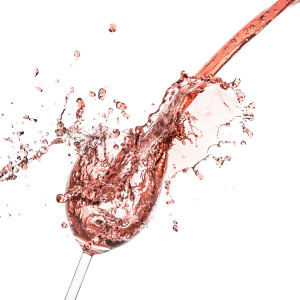
Rosé Rocks
For such a pretty, beautifully hued and generally cheerful-looking wine, rosé in South Africa has had a really strained relationship with consumers over the past decade or so. I’m not pointing fingers or laying blame but I suspect we’d all agree that this is largely due to two reasons: sugar and volume. I sincerely mean no offense to any producer but sugary sweet pink wines and pink wines in big boxes have – in the minds of many – set the tone for rosé consumption in SA. OBVIOUSLY not exclusively, but it’s a connotation that has been pretty dominant. Pair that perception with the idea that rosé is for girls, and you’ve essentially shoved your average rosé consumer into a pretty tightly defined box. Today though, I say to you, rejoice! For rosé is riding its own little wave of revolution – and we are all better off for it.
I may have mentioned previously my pained personal relationship with the rosy liquid; a definite case of “It’s not you, it’s me”. For years I avoided any and all wines which I even imagined had a hue of blush in it. This aversion was not because of anything wrong with rosé as such – not cultivar or style, not even sugar or bulk. It was all based on one week in 2006 where I was immersed in pink wine. As part of my honours degree, we completed a sensory training course at the Stellenbosch University Department of Food Science. The subject for that year was rosé wine. I spent a full week tasting, evaluating, studying, spitting, swirling and accidentally swallowing pink wine – from 8AM to 5PM. Five full days. The aim of the course was to teach us about the basic principles of sensory evaluation by training the group as a sensory panel. So we spent the days familiarising ourselves with the typical rosé characteristics, comparing each aroma and taste with the actual foodstuff, and then went into painfully detailed scoring processes. The wines were dead average. Dead boring. Dead awful.
I am not even moderately exaggerating when I tell you that for nearly 6 years I refused to even taste pink wines. At wine outings, I’d simply let the blush bottles pass me by. I wouldn’t even sniff it. I was traumatised. Academically the experience was fantastic. Practically, I was ruined.
Now, anyone who has ever read a word I’ve written has probably garnered that I pride myself on not being a judgmental wine drinker (or writer). Like everyone, I have my preferences, but I’ll try anything once and give all wines a fair chance to impress or inspire me. So when I ventured into the world of wine writing, I realised I could not be a credible wino if I ignore an entire style of wine. I reconciled with the pink monstrosity I’d so battled with for years and I can tell you now, I could not be happier.
Anyone who has paid a modicum of attention to what’s happening in your local wine shops will probably have noticed significant growth in contents of the pink shelves. Not only are there more rosé wines being produced, but styles are lighter, more Provençal and undoubtedly more delicious. SA has seen rosé consumption treble between 2007 and now – it is the fastest growing local wine category. And it’s not just here that the pinkies have been moving and shaking. Both USA and UK show double digit growth figures in the category and – shock! horror! – last year the richest of the rich in the New York Hamptons ran out of the precious pink nectar.
It’s a brilliant food wine (not sure if you should pair white or red with that meal? How about pink. Ding ding ding! We have a winner.). Pink MCC has also increased dramatically with winemakers exploring new styles and cultivars. And you know, the pink bubbles are often more expensive (even arguably, more delicious?) than their white counterparts.
Doubtless then that now is a terrific time to introduce SA’s first exclusive rosè wine competition. Conceptualised and brought to life by Clare Mack and her team at Spill Brand Communications, the Rosè Rocks competition was born. I was tickled pink (sorry…) to be invited to judge the competition. We were chaired by the brilliant Allan Mullins and the judging panel consisted of myself, Tinashe Nyamudoka (the head sommelier at The Test Kitchen), Neil Pendock, Malu Lambert (freelance food & wine journo) and Praisy Dlamini (winemaker at Zonnebloem). The judging went down yesterday and was completed as a blind tasting. All the results will be audited by Grant Thornton to ensure transparency and results the public can have confidence in.
We tasted around 160 odd entries and I was both impressed and slightly relieved to find that the majority of the entries were dry and off-dry. A relatively small amount of sweet pinks were entered. There were also a good amount of MCC entries (and what a treat it was to judge those). The winners will be announced at the awards ceremony on the 30th of September. As everything was tasted blind, not even the judges knows who came out tops. There will be a Top 10 announced for the still wines as well as one overall winner, and a Top 3 MCC wines and also one overall winner.
This may have been my first formal competition judging experience, but it was an excellent one. Scores were tallied, results discussed and the top wines were re-tasted to ensure that a deserving winner was picked. I’m counting the days until the embargo lifts and I can quiz the organizers about the identities of my personal favourite picks, because I will definitely be stocking up.
Most importantly, the interest in this competition has been immense, boding well for a summer of superb rosè sales and consumption alike. If you are someone who (like I was) simply does not rate rosè, I urge you to take a fresh look at what’s happening in this category. In fact, I will struggle to take you seriously as a wine drinker if you don’t at least try. And the idea that pink wines are for ladies is so last year. I’d refer you to the brosè movement and tell you that real men can pull off drinking pink drinks.
I’ll be spending my summer sipping away on some cool rosè, feeling pretty pleased to be back in the pink.
The post To Be (back) In The Pink appeared first on Incogvino.
]]>The post Tank & Barrel – Finally, a Cool Wine Club? appeared first on Incogvino.
]]>
Wine Club for Cool Kids
I am not a fan of the traditional wine club format. I was duped into joining one ages ago – not a wine farm affiliated club, just a general wine-of-the-month type. It was horrific. I could put together a better selection than the ones I received by tossing glue-covered corks at a supermarket wine shelf and taking the first ones they stick to. It’s horrendous and nearly always “good idea, bad execution”. There are many reasons why this is the case, probably mostly because of badly sourced wines or budgetary constraints; if you want to offer people 6 or 12 wines of a certain quality, then there is a certain cost associated. And if you don’t happen to like the selection, you’ve just paid a bundle for a case or two you don’t care for. Thankfully, there are those among us who have wrestled with this problem on behalf everyone who has have suffered through the annoyance of being sold awful wine in bulk. Could it be that Tank & Barrel has managed the impossible? Have they created a cool wine club?
Tank & Barrel is a concept created by Alex Brodbeck and winemaker Francois Haasbroek. They wanted to take the mostly outdated idea of a wine club and drag it into the now by making both the process and offerings appealing. They’ve transformed the monthly wine club by breaking it down to its bare bones. Membership is R300 per month and for that you get two exciting, unusual and very much niche wines delivered to your door.
At first glance, the idea of two wines seems a bit underwhelming – we’re so used to these operations selling us multiples of 6. The reasoning behind it though is quite pragmatic: when you are subscribed to a wine club delivering 6 or more wines that you don’t specifically pre-select, the odds of you being stuck with wines you don’t like are quite high. Receiving only two bottles a month means if you don’t like what you get, you only have the one bottle to deal with. On the upside, if you DO like what you receive and you want to buy more, you can order as many as your heart desires directly from T&B. Win. Win.
In short, it’s an efficient monthly wine exploration service offering easy discovery of new wines and the anticipation of a new surprise each month.
The wines that feature in the club are definitely more off the beaten track than mainstream. Not entirely unknown or unacclaimed, of course, but not always the type of vino that you’ll pick up at your local supermarket liquor shop. They don’t stick religiously to the R150 per bottle average – some packs are made up of two wines worth a tad more than R300. The R150 per bottle price point is one where you often find a multitude of exciting wines. The T&B monthly selections so far have included (to name a few) Duncan Savage White, The Foundry Grenache Blanc, Vuurberg White, Overgaauw Cape Vintage Port AND Touriga Nacional, Fram Pinotage and Keermont Terrasse.
I was generously sent a “test box” (containing the Keermont Terrasse and the Fram Pinotage) to see if I – with my deeply ingrained dislike of wine clubs – would be sold on the idea of this one. Hand on heart: I am converted. Each month’s wines come with fantastic tasting notes, dripping with wit and information. An infographic styled image in the middle tells you all you need to know about the wine, including what it smells like, whether to decant or not, ideal pairings and serving temperature, what it looks like and where it’s from. Paragraphs dotted around it provide some extra info on the wine, the winemaking, the winemaker, region and soils and a very short and sweet “What WE think (Why we picked it)”. There’s also a superb Bad Pairing suggestion: for the Keermont it was “Don’t pair with people who think white wine can’t age” and for the Fram it read: “Creme Soda – Why spoil the world’s most noble drink with wine?”. Each delivery also has a little blurb on a wine-related topic, just to get you thinking about wine some more.
Tank & Barrel is, in some ways, still a work in progres. Their ‘To Do’ list for the future includes a new website, eCommerce and maybe even an app to snap together and streamline the whole thing. T&B as it is today is definitely a must-try. Ingeniously selected wines with brilliantly informative and entertaining tasting notes and the option of buying your favourites directly from them is an unconventional and convenient; it’s the most innovative way to discover new wine that I’ve come across.
Membership is R300 per month and (for now) you sign up for 6 months with a once-off payment of R1800. As the club grows, monthly payment options are likely to follow.
For more information (or to sign up!) you can find them on Facebook or check out their website.
The post Tank & Barrel – Finally, a Cool Wine Club? appeared first on Incogvino.
]]>The post {Giveaway} – KWV The Mentors New Releases appeared first on Incogvino.
]]>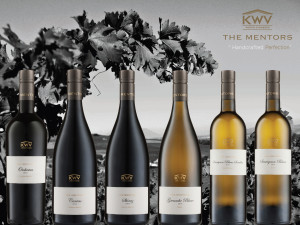 Established in 1918 as a winemaking co-operative, KWV is a famous and inextricable part of the local wine industry. The company today encompasses a multitude of award-winning wines and brandies. While the iconic Roodeberg may have been the first ‘flagship’ wine, in recent years The Mentors range has taken over that role. These wines strive to be a true expression of terroir, experimenting with different cultivars from different areas and creating a new standard of excellence and consistency.
Established in 1918 as a winemaking co-operative, KWV is a famous and inextricable part of the local wine industry. The company today encompasses a multitude of award-winning wines and brandies. While the iconic Roodeberg may have been the first ‘flagship’ wine, in recent years The Mentors range has taken over that role. These wines strive to be a true expression of terroir, experimenting with different cultivars from different areas and creating a new standard of excellence and consistency.
According to those in the know, premiumisation is not only a thing but a global trend. Brands and services aim to offer a range of products at different price points, often aimed at different consumers. The ever-present lookout for new ways to add more value is everywhere. It’s particularly prevalent in the wine industry, with both large-scale producers and small to medium wineries setting out their offerings with labels like entry-level, premium, reserve etc. Some seem to get it quite wrong at times, asking premium (and above) prices for wines that are mediocre at best. Whether or not premiumisation was a goal in mind during creation of The Mentors range, they’ve very much gotten it right.
In 2006, The Mentors range was created by KWV with the purpose of allowing the winemakers free reign in terms of creativity, experimentation and sourcing the best grapes from the best vineyards. It’s no small task to create wines that are earmarked to be the flagship products for a company such as KWV but the team behind The Mentors have come out swinging and the results are nothing less than spectacular.
If it’s quality you’re concerned with, the production of The Mentors ticks all the boxes one would expect: stringent selection of vineyards and grapes, only the ‘best of the best’ wines get bottled and even then, quantities are limited. If the wines don’t reach the high quality standards, it simply doesn’t get released. For example, The Mentors Grenache Blanc was last released in 2011 and was only given the green light again this year with release of the 2014 vintage. They simply don’t mess about: if it’s not good enough, it’s not going out.
Putting aside the economics of cost, production and any other factors that influence the decision to release a wine or not, I respect the philosophy behind this range immensely and (in my opinion, at least) it pays dividends. I have not yet encountered a wine from the range that I have not enjoyed or adored. A brand offering such consistent quality and innovation is not to be sniffed at. You should rather be sniffing their wines.
I’m not going to say much about the wines because they very much speak for themselves. Also, if I started, this post would become very long, very quickly. I will mention that I was enamoured by the new release Grenache Blanc 2014, citrus and apple notes greet your nose and the wine itself is fresh with a clean but creamy lingering palate. I would not recommend sharing this with anyone – it’s just too good.
So because I love The Mentors and because the good people at KWV love sharing their very best with wine lovers everywhere, I have a mixed case (valued at R1290) of brand new release The Mentors wines to give away. The case consists of the following wines:
Grenache Blanc 2014
Sauvignon Blanc – Elim 2014
Sauvignon Blanc/Semillon 2014
Orchestra 2013
Canvas 2013
Shiraz 2013
To enter, simply comment below and tell me which great individual (historic figure, musician, artist – either still with us or someone who has already shuffled off this mortal coil) you would want to share a bottle of The Mentors with and why? Be creative, describe how you see it happening in your mind’s eye. Interesting answers may or may not count more than shorter ones. *ahem*
For additional entries, retweet the link to the competition with the #MeetGreatness or use the tweet below:
Tell @WeAreIncogvino how you would like to #MeetGreatness with @KWVwines The Mentors and you could win. https://incogvino.co.za/?p=562
Winners will be drawn and announced on Monday 13 July.
*** Competition is now closed. Congratulations to Lize Hartley for the winning comment!***
The post {Giveaway} – KWV The Mentors New Releases appeared first on Incogvino.
]]>The post Warming up… appeared first on Incogvino.
]]>
We’re back!
I won’t lie. It’s been a rough month and a bit, kids. Exams for me, work has been brilliant but beyond crazy and the usual syndrome of all other priorities being more important than giving Incogvino some TLC.
Well, that ends this week. Not only have the wine-filled and -fueled thoughts been aplenty lately (with discussions, debates and devilishly brilliant days out being had) but if you’re an Incogvino SuperFAN, we’ll be enjoying the fruits of a farm’s labour again soon in the form of a delectable fan box. If you don’t know what the SuperFANS are, you should really check it out. Everyone is welcome to join – but you might be asked some really tough questions before you’re welcomed – like what’s your favourite wine (who even HAS the answer to that?!).
So stay tuned – we’re just warming up.
– Konfyt
The post Warming up… appeared first on Incogvino.
]]>The post King Cab – The Christian Eedes #CabReport2015 appeared first on Incogvino.
]]>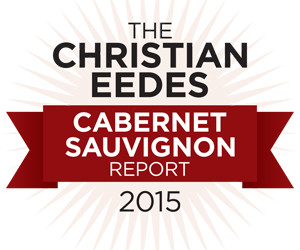
2015 Cabernet Sauvignon Report
It’s often said that Cab is King in Stellenbosch, and that the area is generally considered “Cabernet Country”. I’ve heard winemakers and others in industry mumble the sentiment that if you can’t make a decent Cabernet Sauvignon in Stellenbosch, you have no business being a winemaker. Perhaps a harsh sentiment, but it rings true in many ways. South African wine is going in many different and exciting directions, but perhaps we must be wary of spreading ourselves too thin in a cultivar sense? Of course diversifying and experimenting is great in terms of new offerings and discovering what is possible (and equally, what is not) but there is also no sense in moving rapidly away from our strengths – of which Cabernet Sauvignon is definitely one. The annual Christian Eedes Cabernet Sauvignon Report take a good look at what’s potting with local Cab, and this year continued the showcasing of the top specimens.
The #CabReport2015 was revealed during a casual ceremony at Burrata on Wednesday afternoon. Christian kicked off the proceedings with an introduction and thanked Derek Prout-Jones (thereafter referred to as DPJ) for sponsoring the 2015 report. He went on to explain that for the 2015 report, they moved away from the 20-point/5 star rating system and used the (internationally more standard) 100-point system. They also did away with the Top 10 and instead awarded all wines scoring 90 points and higher a certificate.
DPJ also shared a few thoughts with those gathered. He underlined the importance of the Cab Report, mostly in terms of what it does to raise consumer awareness and – as a result – drive sales, ultimately expanding the wine-drinking footprint. This is specifically important for the cultivar as it’s arguably one of SA’s most important – some would claim it’s our most iconic grape.
The approach to the report as follows (quoted directly from the report):
“The tasting is capped at 60 wines, partly consisting of examples which have fared well in recent local or international competition and partly from those producers I consider to be the best in their field even if somewhat low profile. While other bigger tastings can have a useful talent spotting function, the intention here is very much to do good by what might be called the seeded players, the finite line-up in particular intended to avoid the perils of palate fatigue. The judging panel was chaired by myself – Christian Eedes – and further consisted of two trusted colleagues, namely Roland Peens and James Pietersen, both of Wine Cellar, a Cape Town firm which brokers and cellars fine wine. We tasted blind, scoring done according to the 100-point system.”
If Cabernet is your game, you will want to take note of this report. And to see the consistency with which many of these producers perform, a gander at the report of the previous 3 years illustrates their continuously excellent performance brilliantly – names like Le Riche, Graham Beck, Warwick, de Trafford and Spier (to name but a few) keep popping up in and around the Top 10 and scored 90+ in the 2015 report. It’s a safe assumption to make that these are the winemakers and estates leading the way to top SA Cabernet. If you’re serious about Cab Sauv, do yourself a favour and page through all the reports to spot the trends and have a squizz of where your favourites rank. All previous years’ reports are available on the WineMag.co.za site.
A special treat was having all the 90+ pointers available for tasting. My favourites – in no particular order – were the Vergelegen V 2011 (unreleased) which is still preposterously young but will shape to be a fantastic number in years to come, the de Trafford 2012 which seemed to me the most elegant and beautiful wine of them all and the Warwick Blue Lady 2012. Warwick also went one step further and had a 1991 Cabernet Sauvignon to taste alongside the Blue Lady. It was exquisite, aged beautifully but with enough life in her to go a few more years yet.
You can read the full 2015 report here. Congratulations to Christian on his valuable contribution. While no single report or document is likely to ever be considered comprehensive (for a given value of comprehensive) by everyone who reads it, the fact that we have these inputs available to the public goes a long way to building and promoting wine in general.
The post King Cab – The Christian Eedes #CabReport2015 appeared first on Incogvino.
]]>The post Ex Animo – Wines From the Heart appeared first on Incogvino.
]]>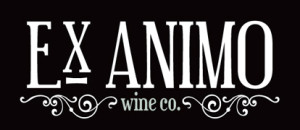
Ex Animo Wine Co.
I first met David Clarke a few years ago when I traded him lessons on wine (he is a sommelier, after all) for Afrikaans lessons. He’d just moved to SA – married to an Afrikaans-speaking local and he wanted to improve his local lingo. Packed schedules eventually got the better of us both and we only really had a few lessons, but his incredibly knowledge and honest, down-to-earth love for wine stayed with me. Back to present day, David and his wife Jeannette have started Ex Animo Wine Co. and they’ve been bloody busy since. They had their first trade show in early March and it was packed to the rafters with some of the most exciting and enjoyable wines I’ve encountered in ages.
First, a bit of an intro for Ex Animo. I think of them as “not just another wine company”. In their own words: “…work with and represent a select group of producers who are passionate about vineyards and aspire to reflect them in the cellar.” and “Our aim is to get South Africans to drink better wine, thus quality ‘in the glass’ is paramount.”.
This vision translates into Ex Animo sourcing some of the most exciting, talked about and paradigm-shifting wines, wineries and wine-makers to be involved with. Each partner reflects the core idea that David and Jeannette have in mind: getting SA to drink better wine through service, knowledge and education. It’s impossible to miss the love these two have for the wine industry and it’s hard to not get excited when chatting to either of them about wine. Their trade show was a collection of the new, the unexpected and in some cases (I’m looking at you, Testalonga El Bandito), the downright incomparable. The complete list of producers featured at the trade tasting is at the end of the post. Choosing out special mentions is tricky (the merits of the likes of Julien Schaal, Testalonga El Bandito and Thorne&Daughters is no surprise to anyone), so I’ll just go for the ones I enjoyed the most – which is also tricky because the wines were all exceptional in their own way.
Craven Wines – I fell in love with their Pinot Noir last year, while continuing a stormy and tumultuous relationship with the heart-break grape. I still love it as much as the first time I tasted it. I also had the chance to taste their Clairette Blanche, which I found fresh and fascinating.
Lammershoek – They brought the longest wine list to the show and I worked diligently through all of them. They make a Hárslevelü (the only other winery I’m aware of that makes one is Lemberg in Tulbagh), the unusual nature of the wine is quite noticeable though it’s probably not to everyone’s taste. As recent self-appointed champion for rosé and Blanc de Noir wines, the LAM Rosé 2013 was a great find, good strong acidity and just the faintest hint of spice from the Syrah with a great finish. The Bush Vines Chenin Blanc was by far my favourite though, good body and a complexity that makes it moreish and engaging.
Spioenkop – Elgin based producer, crazy Belgian Koen Roose makes wines in more a French style (though I wouldn’t presume to try and box their wines in too tightly). The vibrant, cool climate Pinotage 2013 stuck with me, an elegant wine made more like a Pinot Noir than it’s progeny normally is.
I adore what Ex Animo are doing, I think it’s exciting to see people with the knowledge and the (ugh…I hate this next word, but in this case it is authentically appropriate) passion of the Clarke’s doing their bit to breathe new life into industry, adding to the mix in ways that ultimately means that we – the wine consumers – are in for a treat.
The Ex Animo Trade Tasting was held on the 9th of March, 2015 and feature the following producers: Craven, Intellego, JH Meyer Signature Wines, Julien Schaal, Lammershoek, Restless River, Skinny Legs, Spioenkop, Testalonga El Bandito, Thorne & Daughters, Trizanne Signature Wines. The Ex Animo website will be launched soon. For more information, contact David or Jeannette.
The post Ex Animo – Wines From the Heart appeared first on Incogvino.
]]>